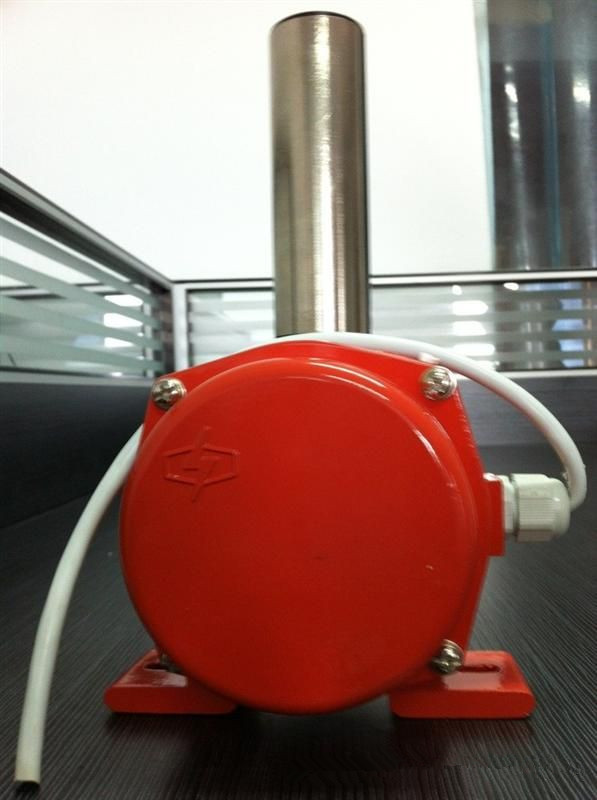
Product Overview:
The deviation switch GHP-250 is a safety protection device used in belt conveyor systems to monitor the deviation of the belt. When the conveyor belt deviates from the normal track, the switch will promptly issue an alarm signal to prevent equipment damage or production interruption caused by belt deviation, thereby improving the operational safety of the conveyor system.
Product features:
- High precision detectionGHP-250 adopts a high-sensitivity sensor that can accurately capture slight deviation of the conveyor belt, ensuring timely alarm.
- durableThe shell is made of high-strength anti-corrosion materials, which can operate stably for a long time in harsh environments.
- Easy installationThe design is simple, easy to install and maintain, and does not require complex tools for debugging and adjustment.
- Waterproof and dustproofEquipped with IP66 protection level, suitable for working environments with high dust and humidity.
- Sensitivity adjustableAccording to the characteristics and application environment of the conveyor belt, the sensitivity can be adjusted to meet different detection requirements.
Technical parameters:
- Model: GHP-250
- Working voltage: AC 220V/380V
- Output form: normally open, normally closed contacts
- Environmental temperature: -30 ° C to 75 ° C
- Protection level: IP66
- Sensitivity adjustment range: 5 ° to 35 ° (adjustable)
- Installation method: horizontal or vertical installation
- Contact capacity: AC 10A 250V
working principle:
The GHP-250 deviation switch is installed on both sides of the conveyor belt. When the conveyor belt deviates, the belt will push the action lever of the switch, causing it to deviate from its original position. At this point, the micro switch inside the switch will be triggered, emitting an alarm signal or controlling the conveyor to stop running through a linkage device to prevent further damage or accidents.
Installation and Debugging:
- Installation locationIt is recommended to install the deviation switch in key positions where the conveyor belt is prone to deviation, such as near the tensioning device in the middle or tail.
- Debugging stepsAfter installation, sensitivity debugging is required to ensure that the switch can respond quickly when there is a slight deviation in the belt.
- Fixing and wiringUse appropriate fasteners to securely install the switch on the bracket and wire it correctly according to the electrical drawing.
Application scenarios:
- Mining industryUsed to monitor the operating status of ore or coal conveyor belts and prevent safety hazards caused by belt deviation.
- Power industryIn the fuel delivery system, ensure that the belt does not deviate during operation to ensure the stability of the power supply system.
- Chemical industrySuitable for conveyor belt systems that transport corrosive materials, avoiding material leakage and equipment damage caused by deviation.
- Metallurgical industryUsed for monitoring conveyor belts in high temperature and high dust environments to ensure the safety and continuity of the production process.
Maintenance and upkeep:
- Regular inspectionRegularly inspect the mechanical and electrical connections of the deviation switch to ensure that all components are in good condition.
- cleanRegularly clean the dust and dirt on the surface of the switch to maintain the sensitivity of the sensor and action lever.
- testTest the response speed of the switch by manually simulating belt deviation to ensure its reliability in actual use.
matters needing attention:
- During installation and use, avoid applying excessive mechanical impact to the switch to prevent damage to internal components.
- When debugging sensitivity, it should be adjusted reasonably according to the load and working environment of the belt to avoid false alarms or missed alarms.
- When maintaining and inspecting switches, be sure to disconnect the power supply to ensure safe operation.
Conclusion:
The GHP-250 deviation switch, as a reliable safety protection device for belt conveyors, has been widely used in various industrial environments due to its high-precision detection and sturdy and durable design. By timely monitoring and warning of deviation, GHP-250 effectively improves the safety and operational efficiency of the conveying system.
Related Q&A FAQs:
1. What working environments is the GHP-250 deviation switch suitable for?
The deviation switch GHP-250 is suitable for various industrial environments, especially in places with high dust, high humidity, and corrosive substances such as mining, power, chemical, and metallurgical industries. Its sturdy and durable design, as well as IP66 protection level, ensure the long-term stable operation of the device in harsh environments.
2. How to adjust the sensitivity of the deviation switch GHP-250?
When adjusting the sensitivity of the deviation switch GHP-250, it needs to be based on the specific working environment and usage requirements of the conveyor belt. By adjusting the sensitivity adjustment screw on the switch, the angle range of the switch action can be set (usually between 5 ° and 35 °) to ensure accurate response when the belt deviates slightly.
3. What precautions should be taken during the installation of the deviation switch GHP-250?
When installing the deviation switch GHP-250, key positions where the conveyor belt is prone to deviation should be selected, such as near the tensioning device in the middle or tail. Ensure that the switch is securely installed and avoid position movement due to vibration or external forces. At the same time, wiring should be strictly operated according to the electrical drawings to ensure the reliability of electrical connections. When debugging sensitivity, detailed adjustments should be made based on the actual operating status of the conveyor belt to avoid false alarms or missed alarms.
